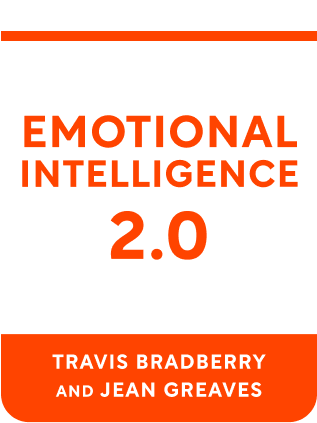

This article is an excerpt from the Shortform book guide to "Emotional Intelligence 2.0" by Travis Bradberry and Jean Greaves. Shortform has the world's best summaries and analyses of books you should be reading.
Like this article? Sign up for a free trial here .
What is the connection between relationship management and emotional intelligence? How can you improve your relationship management skills?
In Emotional Intelligence 2.0, relationship management is defined as the use of your self- and social awareness to develop relationships with other people. It is the fourth pillar of the EQ construct.
Read about relationship management and emotional intelligence.
Relationship Management and Emotional Intelligence
In the context of emotional intelligence, relationship management refers to a set of skills that are involved in developing relationships with other people. Here are 17 relationship management and emotional intelligence tactics to consider:
Tactic #1: Be open and take an interest. Explain your background and share some personal information. When you willingly share things about yourself, it minimizes opportunities for others to misinterpret your behaviors.
Tactic #2: Be accessible. People need to feel comfortable approaching you. To do this, adopt an “open-door” policy. This allows colleagues to come in and have unscheduled conversations in which they can address issues, discuss projects, or seek guidance.
Tactic #3: Embrace feedback. Having someone point out errors or areas of improvement can lead to intense emotional responses. You may feel put on the spot or called out. However, feedback is essential to development and requires that you hear it without letting your emotions get in the way. To enhance your ability to take feedback:
- Think about the purpose. The person bringing you feedback is probably not coming from a place of malice. They’re likely trying to help you by expressing their observations and suggestions.
- Listen. You may feel the urge to get defensive. Take a step back and really hear what the person has to say. Ask questions for clarification.
- Show gratitude. Giving feedback is just as challenging as getting it. It requires thoughtfulness and attentiveness. Appreciate the time that the person took to speak with you, even if you don’t agree with the feedback.
- Take your time. Often, trying to make changes immediately doesn’t give you time to absorb and understand the feedback you were given. Sort out your emotions and thoughts, then move forward.
- Value the feedback. Though you may not agree with the suggestions, take all feedback seriously. Try to implement what you can. You may find that something you didn’t think would work actually makes your life easier.
Tactic #4: Develop trust. Trust is difficult to develop but easy to lose. Practice patience and consistently do what you say you’re going to do to create bonds with the people around you. To begin building trust:
- Promote open communication. Share something about yourself and encourage others to do the same. You don’t need to lay your entire life out for all to see, but showing a little vulnerability helps people feel comfortable trusting you with their personal information.
- Be reliable. If you consistently deliver, people will begin to trust that you’ll do what you say you’re going to do.
- Use your self-awareness. Identify relationships that lack trust and figure out what’s missing. If you can figure out why the trust isn’t there, you can start to take actions to fix it.
- Use your social awareness. Ask people what you can do to earn their trust. This shows that you genuinely want to bolster the relationship, which automatically begins to build trust.
Tactic #5: Improve your communication style. Your natural style of communication dictates how others perceive you. If the way you talk doesn’t reflect your intentions, others may not understand what you’re trying to communicate and may develop negative feelings towards you. To better understand the way you communicate and the ways you can improve:
- Identify your current style. Describe it yourself, then ask friends, family, and/or colleagues to describe it. This keeps you accountable and removes a biased personal opinion from the equation.
- List the upsides and downsides of the way you communicate. For example, if you tend to take charge of conversations, an upside may be that you keep things on task, but a downside may be that you shut down other people.
- From your list of downsides, focus on two or three and figure out how you can adjust for them. You can try to eliminate them, but, if you can’t, find ways you can reduce their impact.
Tactic #6: Avoid mixed messages. They confuse and frustrate people. When you’re communicating, make sure the way you speak and your body language match what you’re trying to say. If you’re telling an employee that you’re excited to have them on a project, but do so with slouched shoulders and a disinterested tone, they probably won’t trust that you’re actually excited.
Everyone has emotions rise to the surface—even people with excellent emotional intelligence. Relationship management is not about withholding or suppressing those emotions; it is about expressing them skillfully constructively.
When you are overwhelmed by negative emotions, try to put them aside until you have the opportunity to express them fully and in an environment that they won’t have a negative impact. You will need to work through your emotions eventually, but, if you let your emotions disrupt the message you’re trying to send, it will give off mixed messages. If you cannot put your emotions aside, be honest. Explain what’s happening and what you’re feeling.
Tactic #7: Explain your choices. People fear what they don’t understand. If you leave people in the dark, they may not know why you’ve made a choice, leading to frustration and/or anxiety. When explaining your decisions, acknowledge any alternative routes, show your thought process, then explain the ways your decision will impact everyone.
Tactic #8: Make sure your intention matches your impact. If you mistime comments or fail to note the emotional state of your colleagues, your good intentions may end with unintended consequences. Respect the emotions of those around you and assess situations before you act.
Tactic #9: Respect the emotions of others. If you try to negate or ignore what they’re feeling, they won’t respond well. Use your listening skills, ask what you can do to help, and be empathetic. This validates the feelings of the other person without exaggerating or exacerbating their emotional state.
Tactic #10: Use common courtesies. Say “please,” “thank you,” and “I’m sorry.” These phrases will help you raise morale and connect to your colleagues through mutual respect and appreciation. These may seem trivial, but they send constant reminders of consideration to the people you’re around.
Tactic #11: Show your appreciation. Little signals of appreciation can go a long way. When someone does good work, praise them. When they go the extra mile, acknowledge it. Even if it’s something as small as buying someone lunch or leaving a thank you note, small gestures let the people around you know that you see the work that they’re doing and that you appreciate it.
Tactic #12: Only use anger intentionally. When anger comes out as an emotional response, you may come across as out-of-control. However, if you use it as a tactic, it can effectively send a message. Only use your anger as a tactic when you feel like you have a masterful handle on your emotions:
- Determine the degrees of your anger. You respond to something that annoys you differently than something that infuriates you.
- Only use your anger when it can improve the situation. Sometimes, anger can motivate people to perform better. Other times, anger demoralizes everyone and destroys efficiency. Assess the situation before you use your frustration.
Tactic #13: Respond appropriately. Read the situation, watch for signals that indicate the emotional state of the person speaking to you, and respond in a way that respects their feelings. This allows you to help people effectively while keeping them calm and rational. Don’t necessarily mirror the other person’s emotions. Especially in high-tension situations, this will make the tone of the conversation even worse.
Tactic #14: Use “fix-it” statements. When things start getting intense, avoid pointing fingers and focus on fixing the problem. “Fix-it” statements are neutral statements that refocus everyone’s attention towards the problem at hand. These statements can be direct solutions to the issue or acknowledgments such as “this is challenging.” They alleviate some of the tension and keep things from getting personal.
Tactic #15: Don’t put off the unavoidable. Sometimes, unavoidable scenarios arise that you aren’t entirely comfortable with. You may have to work on a project that you don’t enjoy or work with a teammate that you don’t care for. In these situations, develop strategies to approach your work effectively while keeping your emotions in check.
When the scenario involves another person, be polite but direct. You don’t need to tell them that you dislike them, but you do need to figure out a way you can work together without too much hostility. Though it may force you to hold your tongue a bit, use your EQ skills to adapt to the person:
- Watch for signals of their emotional state and navigate the conversation accordingly.
- Try to read their perspective of you. They may not want to work with you either, and, while that may sting a bit, it’s important information to note when trying to navigate a difficult working relationship.
Tactic #16: Give effective feedback. Effective feedback requires the use of all four EQ skills, and shows how the EQ progression works.
Self-awareness: How do you feel about the feedback you have to give? Note your emotional responses to the information that you’re sharing. If you’re uncomfortable or anxious, try to find the reason behind those emotions.
Self-management: Regardless of how you feel, keep your emotions in check when delivering feedback. Use the information you gathered from your self-awareness to create tactics to keep yourself calm and on task.
Social awareness: Once you have a handle on your own emotions, think about how this feedback may affect the person in front of you. Consider their personality and current emotional state.
Relationship management: Emotional intelligence is all about acting in consideration of other people’s feelings. So, think about the most effective way to deliver feedback effectively without demoralizing or infuriating the other person.
Tactic #17: Effectively navigate difficult conversations. Remain calm, show your empathy, and speak clearly:
- Start on common ground. When you see a disagreement on the horizon, start the conversation by discussing a shared goal or perspective. This connects you to the other person and shows that, even if you disagree for the rest of the conversation, you agree on something.
- Ask the other person to explain their perspective. Give the person an opportunity to express how they’re feeling and their opinion on the situation. This makes them feel heard and appreciated.
- Try not to plan rebuttals. Listen attentively to the other person. If you’re planning comebacks in your head, you’re not actually hearing the other person.
- Explain your side to the person. Thoughtfully explain the reasoning behind decisions that you’ve made and your perspective on the situation. Think about the other person’s emotions, and clarify your position tactfully.
- Keep the conversation moving. Once you understand the perspective of the other person and vice versa, move the conversation towards resolution. If you allow the conversation to stay in disagreement for too long, hostility can grow.
- Stay in touch. Wounds from tough conversations may take some time to heal. Check in frequently and develop a plan to reestablish trust and remind the other person that you value them.
Final Thoughts
Relationship management is a key skill of emotional intelligence. Like any other skill, it takes practice and persistence to get good at it. Keep at it and you will get better day by day.

———End of Preview———
Like what you just read? Read the rest of the world's best book summary and analysis of Travis Bradberry and Jean Greaves's "Emotional Intelligence 2.0" at Shortform .
Here's what you'll find in our full Emotional Intelligence 2.0 summary :
- What emotional intelligence is and why it's essential for your workplace success
- The 4 reasons you need to work on your EQ
- How you can use EQ to better manage relationships






